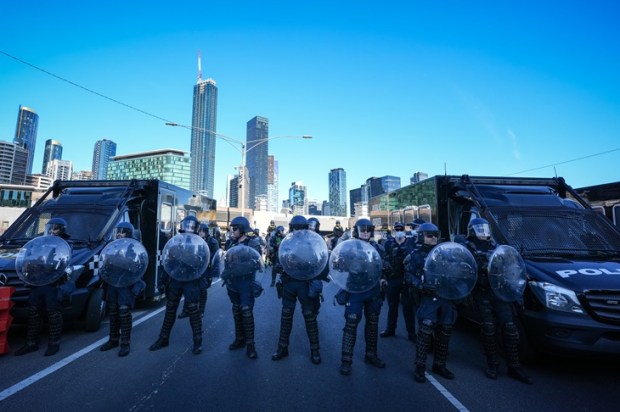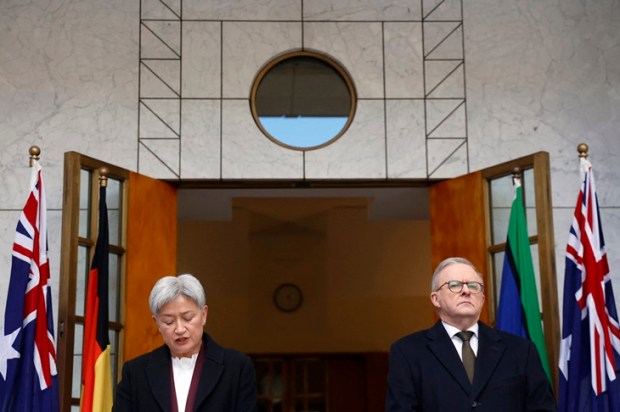Warragamba Dam is spilling again, but it didn’t have to be this way. There have been warnings for decades about the state of Australia’s water assets, the bulk of which have been silenced or pushed aside for ‘environmental’ and ‘cultural’ reasons.
Sydney’s wet weather is not unusual or catastrophic. There is no reason a modern civilisation should be in the situation of handling dam spillage if the advice of former NSW governments had been taken seriously and acted upon.
More than 2,000 years ago, with nothing but basic tools and hard work, the Romans turned deserts into Edenesque cities with hundreds of kilometres of aquifers suspended over inhospitable terrain. Today, we struggle to build a single dam. Progressive? History is laughing at our folly.
Dam spillage is what local residents call ‘a flood we didn’t have to have’. Today they are being advised to monitor the situation closely as they narrow their eyes at the cloud-ridden sky. It’s not raining over the dam, but it takes time for runoff to make its way from the catchment area into the dam.
‘Warragamba’s peak spill rate is expected to be roughly 40 gigalitres per day, assuming the region sees 35mm of rainfall across the weekend,’ said news.com.au
‘With all this rain they said was never going to fall, all those new dams the government built will be filled to the brim … oh wait…’ said one comment on the main article. It was a quip in response to the government falsely using ‘Climate Change’ as an excuse to build expensive desalination plants with attached wind farms instead of the cheaper and more sensible option of dams. Governments implied it would never rain sufficiently to fill dams – so why build them?
There are only two news stories when it comes to Warragamba Dam, nestled in Wollondilly Shire in New South Wales: dangerously low or spilling over the top.
Rural Australians using tank water will immediately understand the problem.
If your water tank is too small for the family, you’ll spend your days with ‘water anxiety’ – panicking about the length of your showers. This excessive conservation means that when it rains, the tanks quickly fill and overflow. No matter how much it rains, there will never be enough water. You are trapped in a permanent cycle of deprivation and temporary excess.
Sydney has the same problem, constantly plagued with water restrictions and Nanny State bullying only for residents to shake their heads in disgust as dam spillage threatens those downstream.
Warragamba was built between 1948-60, when the population of Sydney was around 1.69 million. This year, it has jumped to 5.1 million. Suffice it to say it was never designed to take on a population increase of this magnitude. Since its construction, only minimal changes have been made, including a 5-metre raising of the wall following a review in the late 1980s. Clearly realising that the dam was being stretched beyond its intended use, 2006 saw the Warragamba Deep Water Storage Recover Project lower the outlet depth so that additional water at the bottom of the dam could be reached.
The previous NSW government was aware that urgent work needed to be done, not only for the water supply, but as part of flood mitigation given the rapidly expanding housing projects that were quickly eating their way into the floodplains below.
They wanted to lift the dam wall a full 17 metres. Such a move would greatly increase the capacity of the dam and also lower the number of spillages due to small weather events, like what Sydney has experienced this week.
Unsurprisingly, Aboriginal heritage sites and the meddling United Nations stopped this important, life-saving work.
It seems that covering the Blue Mountains in new development projects to satisfy Labor’s ‘Big Australia’ policy and keep the unions in work is fine, but guaranteeing the security and safety of the water supply is of ‘environmental and cultural concern’. One of the complaints that stopped the project was a failure to assess the ‘diversity of eucalypts’. Seriously. I wonder where all these endangered animals go when there are wind turbines to build and solar panels to plant?
For too long, governments have used taxpayer dollars to build the projects they want, not the infrastructure we need.
To cover themselves, they blame the consequences of neglected infrastructure on ‘Climate Change’ – the catchall excuse.

























